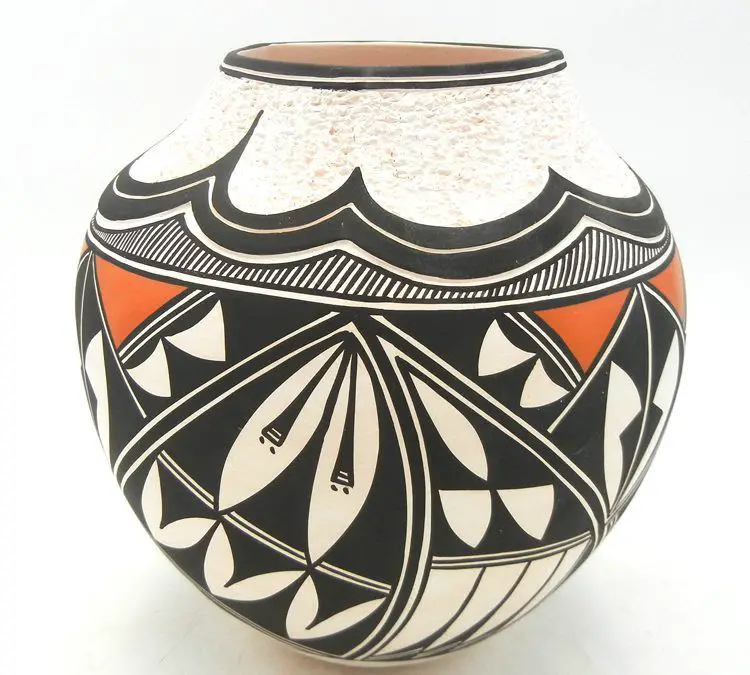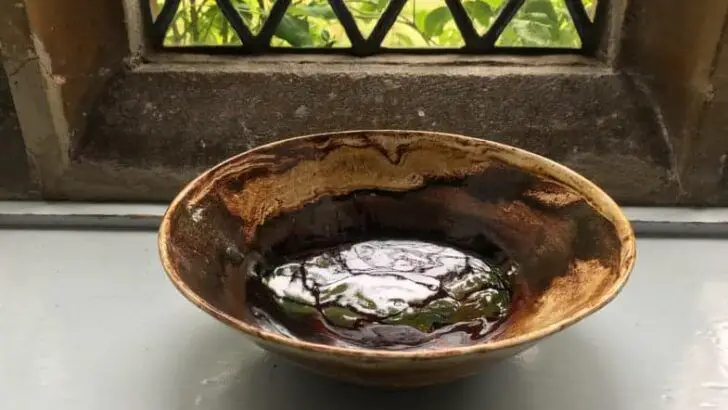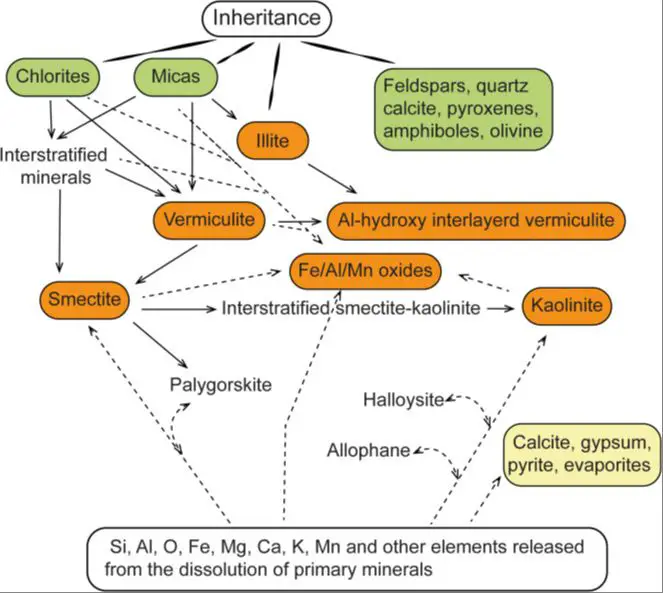What Is One Characteristic Of Acoma Pottery Making?
Origins of Acoma Pottery
The Acoma Pueblo, home to the Acoma people and their famous pottery, is located atop a 367-foot sandstone bluff in west-central New Mexico. The Acoma have continuously occupied this mesa for over 800 years, making their pueblo one of the oldest continuously inhabited settlements in North America.
The Acoma people have a rich cultural history dating back centuries. Their ancestral Puebloan culture thrived in the Southwest, where they built elaborate cliff dwellings and practiced dryland farming. The Acoma continued these traditions and customs even after the arrival of Europeans in the 16th century.
Pottery has been an essential part of Acoma culture for hundreds of years. Using clay and other natural materials sourced locally, Acoma artists developed a unique pottery style that remains iconic today. The section on Origins provides background on the Acoma people and how their history shaped the distinctive pottery tradition that emerged.
Materials
Acoma pottery is made from locally-sourced clay, minerals, and natural pigments found near the pueblo. The clay comes from sacred clay beds located around the mesas and valleys surrounding Acoma Pueblo. It has a distinct red color due to its high iron content. According to the Acoma Sky City Cultural Center, the clay is gathered by the women and prepared by soaking it in water to remove impurities and kneading it to achieve the right consistency.
For paints and glazes, Acoma artists traditionally used natural mineral and plant-based pigments found locally. Common colors included iron-rich red, white kaolin clay, yellow ochre, and black organic pigments. The pigments are mixed with water to create slips and paints for decorating the pottery. Traditionally, Acoma potters did not use lead glazes. The pottery was left unglazed and absorbed natural mineral deposits from the surrounding soil, giving an elegant matte finish.
According to the Cameron Trading Post, today some modern Acoma potters incorporate commercial stains, oxides, and food coloring into their palettes for more color variety. But many artisans still prefer the traditional natural pigments.
Sources:
https://camerontradingpost.com/native-american-art/native-american-pottery/acoma.html
https://www.acomaskycity.org/page/acoma_pottery
https://www.mirappraisal.com/12-01-16/2016/07/01/the-history-and-legacy-of-acoma-pottery
Techniques
Acoma pottery is distinctive for the handcrafted techniques used in its creation. The primary method is the hand coiling technique, in which long coils of clay are stacked and gradually built up to form the vessel shape. The clay coils are smoothed together using fingers, a stone tool, and water. Firing is done in an open pit by placing the unfired pots over a bed of hot coals, and then covering them with wood, dung and other combustible materials. The pots are fired at a relatively low temperature, giving them their characteristic black or gray color. This traditional open pit firing technique, which exposes the pottery to uneven heating and atmosphere, creates the unique crackled and ashy surface textures of Acoma wares. The hand coiling and rustic firing methods connect Acoma pottery back to its ancient Pueblo roots, when these techniques were developed. Even as methods have modernized in other Pueblos, Acoma has maintained its time-honored hand-crafting processes.

Designs
Acoma pottery is known for its distinct geometric patterns and spiritual symbolism. The pots feature graphic designs made up of lines, triangles, squares, dots, and other simple shapes. These striking patterns are a signature of Acoma style. The geometric designs are abstract yet imbued with meaning. Many refer to Acoma spiritual beliefs, rituals, and connections to the natural world. For example, patterns may represent clouds, mountains, animals, corn, lightning, and rain.
Common motifs include the rain cloud, seen as a symbol of life and renewal. Stepped shapes called terraces evoke the mesas and architecture of Acoma Pueblo. Some patterns represent katsinas, ancestral spirit beings central to Hopi and Pueblo culture. Other symbols reflect Acoma origin stories or pay homage to the forces of nature. While the geometric patterns have an elemental simplicity, their spiritual symbolism gives them depth. The elegant juxtaposition of form and meaning makes Acoma pottery designs unique.
Significance
Pottery has profound cultural significance for the Acoma people and serves as a tangible connection to their heritage. According to one source, “Acoma artisans would collect clay from certain places on their land, mix it with finely ground shards of old pottery, soak the mix in water, and hand-form it into vessels” (The Ancient Art of Pottery at New Mexico’s Acoma Pueblo). Pottery plays an integral role in the daily life of Acoma Pueblo residents, used for storing, carrying, and cooking food as well as collecting and transporting water. The continuity of pottery making over centuries reinforces cultural identity and traditions for each new generation of Acoma artists.
Styles
Acoma Pueblo pottery has traditionally been made using black-on-white ware, which features painted black linear designs on a white or off-white base. This style developed in the 14th and 15th centuries AD and is one of the most iconic Southwestern Native American ceramic styles. Some of the traditional Acoma patterns include rain, clouds, lightning, rainbows, birds, and geometric designs inspired byAnimism and natural elements.
In addition to the black-on-white style, Acoma potters also create polychrome pots, featuring multiple colors like red, orange, black, and cream. Rather than painted designs, the color variation comes from using differently colored clay slips. Artists like Corrine and Gary Louis are known for their polychrome pots with ornate shapes.
Modern Acoma potters have also adopted innovations like using horsehair to create interesting textures during firing. The hair burns out, leaving behind the negative space. This horsehair pottery has become popular among collectors. However, traditional black-on-white and polychrome wares remain staples of Acoma Pueblo pottery.
Shapes
Acoma pottery is known for its distinctive shapes and forms. Some of the most common shapes seen in traditional Acoma pottery include:
Bowls
Bowls are one of the most ubiquitous shapes in Acoma pottery. They come in a variety of sizes, from small bowls for individual use to larger serving bowls. Acoma bowls often have rounded sides and flat bottoms. They are frequently painted with geometric designs on the interior.
Jars
Large, rounded jars are commonly seen in Acoma pottery. These vessels were traditionally used for hauling and storing water and other goods. Acoma jars tend to have wide openings and two handles on either side. Their surfaces are usually decorated with classic Acoma motifs.
Plates
Plates and platter forms are also found in Acoma pottery. They are often painted on one side with designs. Some plates have fired clay legs to allow air circulation underneath. These legs represent rain clouds and lightning.
Vessels
In addition to bowls and jars, Acoma potters make various kinds of vessels in different shapes and sizes. These include pitchers, canteens, seed pots, and more. Vessels like pitchers will often have a spout for pouring liquids.
Artists
Acoma Pueblo has a centuries-long tradition of producing remarkable pottery. Some of the most famous Acoma potters through history include Lucy Lewis, Marie Z. Chino, and Juana Leno in the early 20th century. Lucy Lewis in particular is renowned for revitalizing Acoma pottery and pioneering new techniques like using bee plant (cleome) for black painting. Her descendants carry on her legacy today.
Contemporary Acoma artists crafting stunning pottery include Theresa Garcia-Salvador, Sandra Victorino, Judy Lewis, and Terrance Chino. The quality and artistry of their work honors the Pueblo’s ancient pottery heritage while also incorporating new styles and innovations. Many current Acoma potters come from multi-generational artistic families tracing back to the legendary potters of the past.
Collectibility
Acoma pottery is highly sought after by collectors for its handmade aesthetic and cultural significance. The pottery is known for its thin walls, elegant forms, and abstract designs made up of geometric and nature-inspired motifs. As one of the oldest pottery traditions in North America, dating back to the 1200s, Acoma pottery has an appeal as historic Native American art.
Due to this popularity among collectors, Acoma pottery can command high prices at auction. Vintage pieces from acclaimed Acoma artists like Lucy Lewis can sell for upwards of $10,000. Even contemporary pieces tend to start at several hundred dollars. As Acoma pottery making is a cultural tradition passed down through generations, each piece is unique and done completely by hand. This handmade quality increases the value and collectibility.
Factors that impact the value include the age and condition of the piece, the complexity of designs, the renown of the artist, and the size of the vessel. As older pieces are scarce and some artists like Lucy Lewis have passed away, their works are highly coveted. The most valuable and expensive Acoma pottery tends to be those rare, early specimens that showcase the traditional designs and methods.
Preservation
The Pueblo people have lived at Acoma for over 800 years, with their pottery making traditions passed down through countless generations. In recent years, there have been increasing efforts to ensure these ancient traditions continue into the future. The Pueblo of Acoma has emphasized programs to teach pottery making to Acoma youth, allowing elders to pass on their expertise and cultural knowledge to the next generation.
For example, the Acoma Cultural Center hosts pottery classes for children during summer youth programs, teaching traditional techniques like gathering and processing clay, forming pots by hand, and creating ornate painted designs (Pueblo of Acoma). Local schools also incorporate pottery making into their curriculums to immerse students in their cultural heritage from a young age.
Additionally, apprenticeship programs allow aspiring Acoma potters to learn directly from masters. By shadowing expert potters, young artisans gain hands-on experience with sourcing materials, mixing clay, forming vessels, preparing paints, and more. These initiatives help safeguard Acoma pottery traditions for generations to come.


